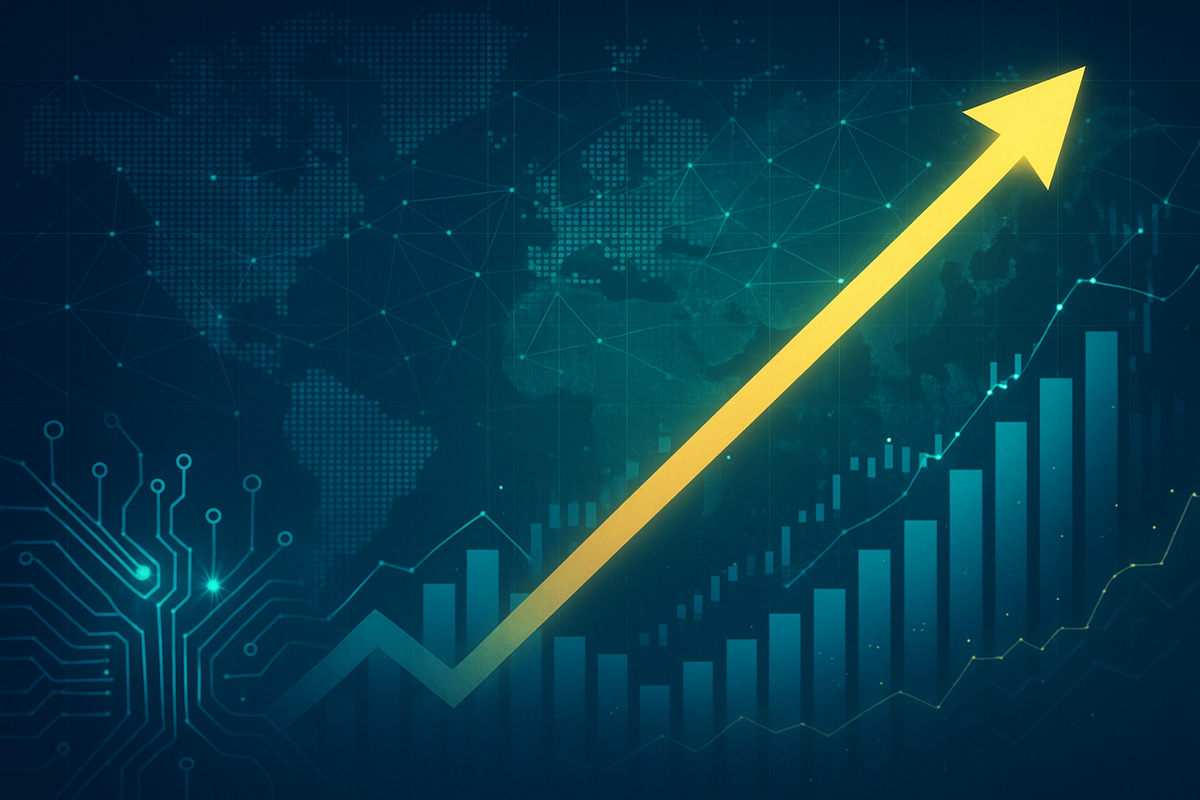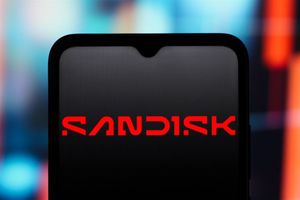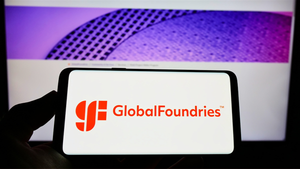
The financial markets are buzzing with the significant upward trajectory of several big tech and tech-adjacent companies, with prominent players like Palo Alto Networks, Intel, Travelers, and Medtronic reportedly reaching new valuation highs. This surge, observed around October 2025, signals a robust investor confidence in the technology sector's resilience and innovative capacity, even as broader economic conditions continue to evolve. The immediate implication of this trend is a potentially skewed performance in major market indices, where the strong showing of these giants can disproportionately uplift overall market sentiment, while simultaneously raising questions about market breadth and concentration.
This impressive rally suggests a renewed focus on companies demonstrating strong fundamentals, strategic innovation, and a clear path to sustained growth. While the enthusiasm is palpable, the market's reliance on a concentrated group of high-performing stocks could also lead to increased volatility and a need for investors to carefully assess underlying valuations and future growth prospects.
Unpacking the Surge: A Closer Look at Market Leaders
The reported new highs for several key players underscore a dynamic period in the financial markets. While precise real-time data for October 2025 remains outside the scope of current predictive capabilities, historical trends provide a robust framework for understanding such movements.
Palo Alto Networks (NASDAQ: PANW), a cybersecurity powerhouse, has consistently been at the forefront of digital defense. A surge in its stock price would likely be attributed to the escalating global demand for advanced cybersecurity solutions in an increasingly interconnected world. The timeline leading up to such a moment would typically involve continuous innovation in AI-driven security, cloud-native protection, and a growing portfolio of enterprise clients. Key players involved in its ascent include its leadership in product development, strategic acquisitions to expand its offerings, and a consistent ability to secure critical infrastructure. Initial market reactions to strong performance in cybersecurity often involve increased investor confidence in the sector's long-term growth, given the non-negotiable nature of digital security.
Intel (NASDAQ: INTC), a semiconductor giant, has been navigating a highly competitive landscape. A significant rise in its stock could stem from a successful turnaround strategy, robust demand for its new generation of processors, particularly in data centers and AI applications, or significant breakthroughs in manufacturing technology. The period leading to new highs for Intel would likely involve successful product launches, regaining market share from competitors, and substantial investments in R&D. Stakeholders include its executive leadership, who are driving the strategic shifts, and the global tech ecosystem reliant on its chip technology. Market reactions would likely be highly positive, signaling a potential resurgence for the venerable chipmaker.
Travelers (NYSE: TRV), a leading property casualty insurer, might seem an outlier in a "tech" surge, but its inclusion highlights the increasing integration of technology across all sectors. A new high for Travelers could be driven by strong underwriting results, effective risk management leveraging data analytics and AI, favorable interest rate environments boosting investment income, or strategic expansions into new markets. The timeline would involve consistent profitability, prudent capital management, and potentially successful adoption of insurtech solutions to streamline operations and enhance customer experience. Key players include its management team and a robust network of agents and brokers. Initial market reactions would likely focus on the company's financial stability and its ability to navigate complex risk landscapes.
Medtronic (NYSE: MDT), a global leader in medical technology, could see its stock reach new highs due to innovation in medical devices, successful clinical trials for new therapies, strong sales of its surgical robotics or diabetes management systems, or strategic acquisitions that expand its market reach. The period leading to such a peak would involve significant R&D investment, regulatory approvals for groundbreaking products, and a growing demand for advanced healthcare solutions globally. Its leadership in medical innovation and its extensive global presence are key drivers. Market reactions would likely be enthusiastic, reflecting the potential for improved patient outcomes and substantial revenue growth in the healthcare sector.
Corporate Fortunes: Winners and Losers in the Tech Rally
The current market dynamic, characterized by big tech and tech-adjacent stocks hitting new highs, creates a clear delineation between potential winners and those facing increased pressure. The companies leading this charge, such as Palo Alto Networks (NASDAQ: PANW), Intel (NASDAQ: INTC), Travelers (NYSE: TRV), and Medtronic (NYSE: MDT), stand to gain significantly.
For Palo Alto Networks, a sustained upward trend reinforces its market leadership in cybersecurity. This could translate into increased market share as enterprises prioritize robust digital defenses, higher valuations for future acquisitions, and an enhanced ability to attract top talent in a competitive industry. The company's focus on cloud security, AI-driven threat detection, and comprehensive security platforms positions it well for continued growth.
Intel's potential new highs would signify a successful execution of its turnaround strategy, bolstering investor confidence in its ability to innovate and compete effectively in the semiconductor space. This could lead to increased capital expenditure for R&D and manufacturing, strategic partnerships, and a stronger competitive stance against rivals like AMD and NVIDIA. A resurgence for Intel would also be a boon for the broader technology ecosystem that relies on its processors.
Travelers benefiting from this trend, despite being an insurer, highlights the market's appreciation for companies that effectively integrate technology to enhance operational efficiency and risk management. Strong performance could lead to increased policyholder acquisition, improved underwriting margins, and potentially higher dividend payouts. The company's ability to leverage data analytics and AI in claims processing and personalized insurance offerings would be a key differentiator.
Medtronic's ascent would underscore the market's recognition of its innovation in medical technology. This could enable further investment in cutting-edge research, accelerate the development and commercialization of new medical devices, and expand its global footprint. The company's focus on areas like surgical robotics, cardiovascular health, and diabetes management positions it to address critical healthcare needs and capture significant market opportunities.
Conversely, companies that fail to innovate, adapt to technological shifts, or maintain strong financial performance might find themselves losing ground. This market environment could exacerbate challenges for those with outdated business models, heavy debt loads, or an inability to compete with the technological advancements of the market leaders. Smaller, less agile competitors might struggle to keep pace with the R&D budgets and market reach of these established giants, potentially leading to consolidation within various sectors.
Wider Significance: Ripple Effects Across the Market
The phenomenon of big tech and tech-adjacent stocks reaching new highs carries wider significance, reverberating across various industry sectors and potentially influencing regulatory landscapes. This event fits into a broader industry trend of increasing digitalization and the undeniable impact of technological innovation on nearly every facet of business and daily life. Companies that effectively leverage AI, cloud computing, and advanced data analytics are demonstrably outperforming those that lag in digital transformation.
Potential ripple effects on competitors are substantial. For instance, in cybersecurity, Palo Alto Networks' (NASDAQ: PANW) strong performance could compel rival firms to accelerate their own R&D and acquisition strategies to remain competitive, potentially leading to a wave of innovation or consolidation within the sector. Similarly, Intel's (NASDAQ: INTC) resurgence could intensify competition in the semiconductor market, pushing other chip manufacturers to innovate faster and more efficiently. In the medical technology space, Medtronic's (NYSE: MDT) success could spur other medical device companies to increase their investment in R&D for new therapies and robotic surgery solutions. Even in insurance, Travelers' (NYSE: TRV) tech-driven efficiency gains could pressure other insurers to adopt similar strategies to optimize their operations and enhance customer experience.
Regulatory or policy implications could also emerge. A sustained concentration of market value in a few dominant tech companies might attract increased scrutiny from antitrust regulators, particularly if their growth is perceived to stifle competition or create monopolies. There could be calls for new regulations concerning data privacy, AI ethics, and market dominance, especially if these companies continue to expand their influence across multiple sectors.
Historically, periods of significant tech-led market rallies have often been followed by periods of adjustment or correction. Comparisons can be drawn to the dot-com bubble of the late 1990s, though the current environment is arguably underpinned by more robust fundamentals and widespread technological adoption. Another precedent could be the growth of the "Nifty Fifty" stocks in the 1960s and 70s, where a select group of large-cap growth stocks drove market performance. However, a key difference today is the global reach and interconnectedness of these tech giants, making their impact more pervasive. These historical parallels serve as a reminder for investors to maintain a balanced perspective and not get swept away by euphoria.
The Road Ahead: Navigating Future Market Landscapes
As big tech stocks continue to forge new highs, the market stands at a critical juncture, with both short-term opportunities and long-term challenges on the horizon. In the short term, the momentum generated by these market leaders could continue to draw capital, potentially sustaining the upward trend and reinforcing investor confidence. However, this could also lead to increased volatility as investors closely monitor earnings reports and macroeconomic indicators for any signs of a slowdown. Strategic pivots or adaptations will be crucial for companies looking to maintain their growth trajectories. For instance, Palo Alto Networks (NASDAQ: PANW) will need to continuously evolve its cybersecurity offerings to stay ahead of emerging threats, while Intel (NASDAQ: INTC) must execute flawlessly on its product roadmap to regain and maintain its technological edge.
Looking further ahead, the long-term possibilities are vast, but not without complexities. The continued integration of artificial intelligence, quantum computing, and advanced biotechnologies promises new avenues for growth and innovation. Market opportunities may emerge in ancillary sectors that support the growth of these tech giants, such as specialized software development, advanced manufacturing, and data infrastructure. Conversely, challenges could arise from intensified regulatory scrutiny, geopolitical tensions impacting global supply chains, and the constant pressure to innovate in a rapidly changing technological landscape.
Potential scenarios and outcomes vary. A "best-case" scenario would see these companies continue their innovation, driving economic growth and creating widespread benefits, with market valuations remaining supported by strong fundamentals. A "worst-case" scenario could involve an overextension of valuations, leading to a significant market correction, particularly if growth expectations are not met or if a major economic downturn occurs. Another scenario involves a more diversified market rally, where the success of big tech inspires growth across a broader range of industries, leading to a healthier, more balanced market. Companies like Travelers (NYSE: TRV) and Medtronic (NYSE: MDT), while not pure tech, demonstrate how technology integration can drive success in traditional sectors, suggesting a future where technological prowess is a prerequisite for leadership in almost any industry.
Concluding Thoughts: A Market in Transformation
The current market environment, characterized by big tech and tech-adjacent stocks like Palo Alto Networks (NASDAQ: PANW), Intel (NASDAQ: INTC), Travelers (NYSE: TRV), and Medtronic (NYSE: MDT) hitting new highs, signifies a profound transformation in the financial landscape. The key takeaway is the undeniable influence of technological innovation and digital transformation as primary drivers of market value. Companies that effectively harness these forces are being rewarded with robust investor confidence and elevated valuations. This trend underscores a broader shift towards an economy increasingly powered by data, artificial intelligence, and advanced connectivity.
Moving forward, the market's trajectory will likely be shaped by several critical factors. Investors should closely assess not only the headline growth figures of these dominant players but also the underlying fundamentals, their ability to sustain innovation, and their strategic responses to evolving competitive and regulatory pressures. The concentration of market gains in a few large-cap stocks warrants careful consideration of portfolio diversification and risk management. While the current momentum is strong, the lessons from historical market cycles emphasize the importance of vigilance and a balanced perspective.
In the coming months, investors should watch for continued innovation in core technologies, the impact of rising interest rates or changing monetary policies, and any shifts in regulatory attitudes towards large technology companies. Geopolitical developments and their potential effects on global supply chains and market sentiment will also be crucial. Ultimately, the lasting impact of this period of tech-led growth will depend on the ability of these market leaders to translate their current success into sustainable long-term value, navigating both the opportunities and challenges that lie ahead in an ever-evolving global economy.
This content is intended for informational purposes only and is not financial advice.






